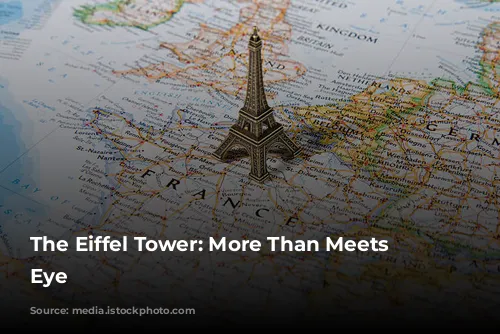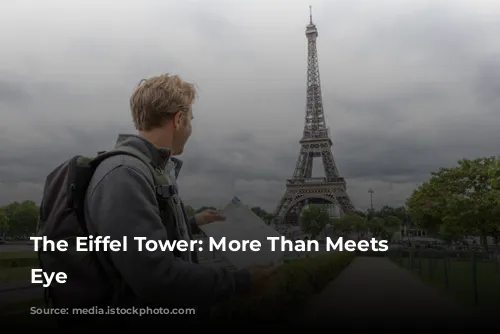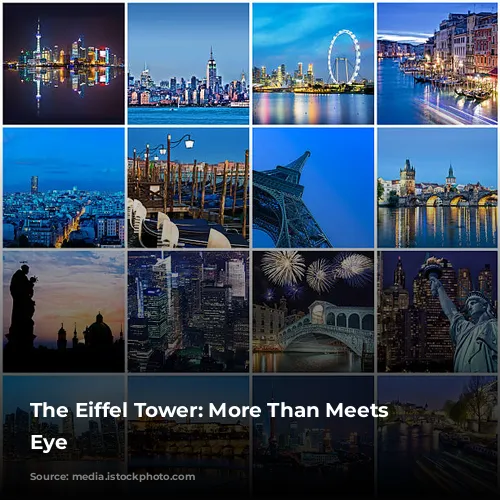The Eiffel Tower in Paris, France, is a global icon, recognized instantly by people around the world. Completed in 1889, this towering marvel of engineering attracts millions of visitors each year. But beyond its iconic status, the Iron Lady holds some captivating secrets, waiting to be unveiled.

A Private Paradise High Above Paris
Imagine living in one of the most famous landmarks in the world. Well, Gustave Eiffel, the architect who designed the tower, did just that! He built himself a luxurious apartment on the top level of the structure. This sky-high haven was decorated with plush carpets, exquisite oil paintings, and even a grand piano. The space was reserved for select VIPs, such as the brilliant scientist Thomas Edison. After Eiffel’s death in the 1920s, this hidden gem remained a secret for decades. It wasn’t until 2015 that this 950-foot-high sanctuary was opened to the public, offering a glimpse into the life of the tower’s creator.

A Laboratory in the Clouds
The summit of the Eiffel Tower is an ideal spot to study the cosmos and the weather. Recognizing this, Eiffel established two laboratories on the third level, dedicated to astronomy and meteorology. He also conducted his own research, exploring the movement of objects through the air by dropping weighted cords from the tower’s second level, about 380 feet above the ground, and observing their descent.

A Touch of Green
The Eiffel Tower is not just a monument; it’s a symbol of sustainability. In 2015, the iconic structure underwent an eco-friendly makeover, incorporating wind turbines on the second level to harness wind energy for the tower’s shops and restaurants. Additionally, a rainwater collection system was installed, channeling the collected water to the tower’s toilets. This forward-thinking approach showcases the tower’s commitment to environmental responsibility.
A Journey Through Time
The Eiffel Tower has been witness to history unfolding. Officially unveiled at the 1889 World’s Fair, the tower has seen the evolution of technology and innovation. From the invention of the Ferris wheel to the advent of television, the World’s Fair, now called an Expo, has served as a platform to showcase the latest advancements in science, art, and culture, held every three years in a different city around the globe.
A Secret Agent’s Hideout
The Eiffel Tower has been a secret agent’s haven. During World War I, the French military utilized the tower’s radio and telegraph center to communicate with ground troops and naval vessels. The tower also served as a listening post, intercepting enemy messages. In 1916, the tower picked up a message about a female spy named Mata Hari. Using this intelligence, the French military tracked down and apprehended the agent. The Iron Lady played a vital role in safeguarding the country during wartime.

Daring Feats
The Eiffel Tower has been a stage for daring adventures. From walking up the 704 steps on stilts in 1889 to swinging from ropes 400 feet aboveground without a net in 1952, the tower has witnessed a remarkable range of feats. In 2010, a roller-skater descended a 90-foot-tall ramp, showcasing the tower’s ability to inspire both awe and adrenaline.

A Symphony of Colors
The Eiffel Tower has seen a colorful transformation over time. Originally painted dark red, the structure received a yellow makeover in 1899. About 50 years ago, the tower was painted bronze. Today, the Iron Lady is adorned with almost 16,000 gallons of paint, which is refreshed every few years, making the tower a stunning and ever-evolving masterpiece.

A Monumental Legacy
The Eiffel Tower stands as a testament to human ingenuity, artistry, and resilience. More than just a symbol of Paris, it is a global icon, carrying the weight of history, innovation, and adventure. From its secret apartments to its environmental initiatives, the Eiffel Tower continues to amaze and inspire, revealing its intricate secrets with each passing year.






